People
14 Yayoi Kusama Quotes to Celebrate the Artist’s 87th Birthday
Get to know the world's most popular artist.
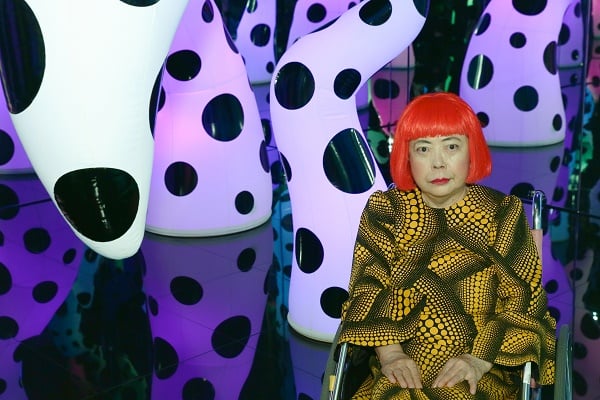
Photo: Andrew Toth/Getty Images)
Get to know the world's most popular artist.

Yayoi Kusama is a living contradiction. She is the most popular artist in the world, but few people really delve into her art beyond Instagram.
She was born in Nagano, Japan on March 22, 1929, and has had artistic inclinations—as well as troubling hallucinations—since childhood. She ditched an unsupportive family and moved to New York City in 1957, where she mingled with avant-garde artists like Andy Warhol, Eva Hesse, Donald Judd, and Joseph Cornell, staging provocative happenings in public despite the dangers.
She returned to Japan in 1973, and in 1975 was committed to a psychiatric hospital in Tokyo, where she still lives today, making work in the hospital and in various studio spaces she maintains in the neighborhood. A visionary with spiritual optimism and relentless self-confidence, her rare interviews are full of beautiful moments.
Celebrate Kusama’s 87th birthday through a few words by the artist on her life and work.
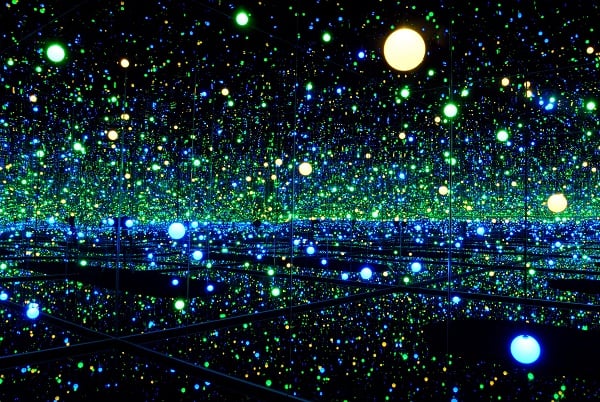
Yayoi Kusama, Gleaming Lights of the Souls (2008).
Photo: Jim Dyson/Getty Images.
On her mother:
“My mother beat me and kicked me on the derriere every day, irritated that I was always painting…When I left for New York, my mother gave me $1,000,000 yen and told me never to set foot in her house again.”
On polka dots:
“When I create my work, I’m not forcing to bring the polka dots into it. Subconsciously, it became polka-dots always by itself.”
“[The mirror room] gives us the sense of the infinite existence of electronic polka-dots. I looked at the piece, and I thought that this is fantastic and I became a fanatic fan of the work.”
“After all, well, moon is a polka dot, sun is a polka dot, and then, the earth where we live is also a polka dot.”
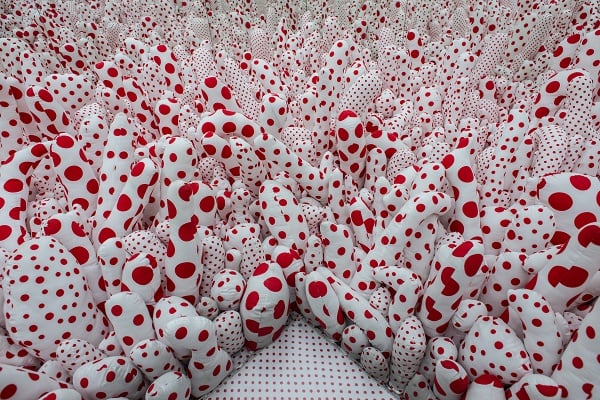
Yayoi Kusama, Infinite Obsession (2013).
Photo: YASUYOSHI CHIBA/AFP/Getty Images.
On artists who copy her work:
“My reaction [to Lucas Samaras’ mirrored rooms] was, ‘He did it again.’ I hope Lucas pursues the path of creativity and pain inherent in artists from now on, instead of following what Kusama has done.”
“When I went to the opening of [Claes Oldenberg’s] solo show held at the Green Gallery [in 1962], his wife led me to his piece Calendar and said to the effect, “Yayoi, I am sorry we took your idea.” I was surprised to see the work almost identical to my sculpture.”
“Andy [Warhol] copied my ideas such as repetition and accumulation for his work.” (source)
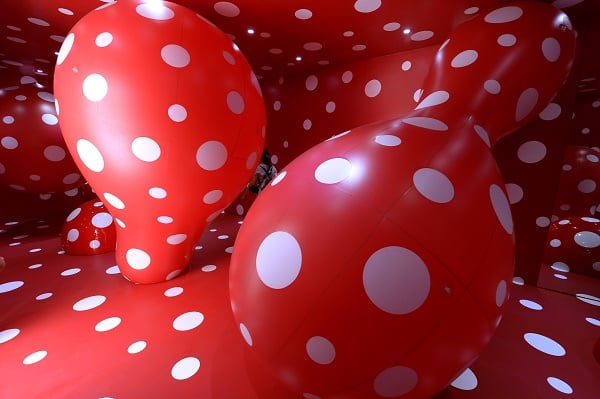
Yayoi Kusama, “Dots Obsessions” (2013).
Photo: HOANG DINH NAM/AFP/Getty Images.
On her mental health:
“My art originates from hallucinations only I can see. I translate the hallucinations and obsessional images that plague me into sculptures and paintings. All my works in pastels are the products of obsessional neurosis and are therefore inextricably connected to my disease. I create pieces even when I don’t see hallucinations, though.”
“Because my mother was so vehemently against my becoming an artist, I became emotionally unstable and suffered a nervous breakdown. It was around this time, or in my later teens, that I began to receive psychiatric treatment. By translating hallucinations and fear of hallucinations into paintings, I have been trying to cure my disease.”
“I left Japan determined to live and die in the United States. I would not have had to return to Japan, even temporarily, if my Japanese doctor in New York had given me surgical treatment early enough. Now, without realizing it, I have been in this mental hospital for 20-some years. I live a peaceful life creating artwork.”
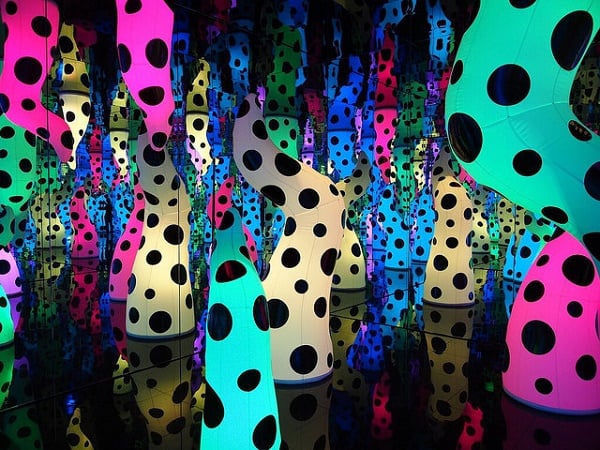
Yayoi Kusama, Love is Calling (2013).
Image: M_Strasser via Flickr Creative Commons.
On coming to New York:
“When I arrived in New York, action painting was the rage, de Kooning, Pollock and others. I wanted to be completely detached from that and start a new art movement.”
On inspiration:
“My ideas and creativity are the sources of inspiration for me.”
“In front of paint brushes and canvas, my hands react to them and make my work before I think of anything. Then, when the piece is completed, I look at it, and am surprised by the result—always.” (source)
On fame:
“I want to become more famous, even more famous.”